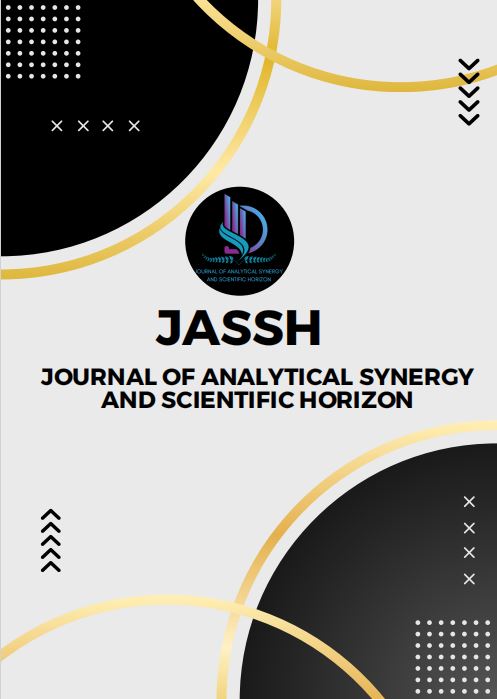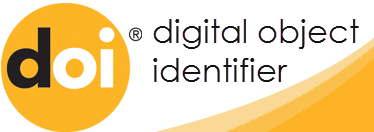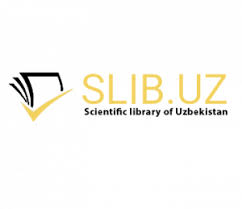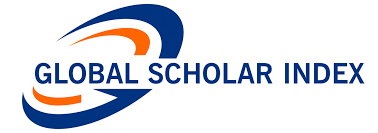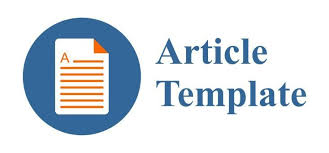WHAT DO FLEXIBLE WORKERS WANT FROM MANAGERS?
Keywords:
remote working, flexible working, work-life balance, isolation, workplace flexibility, recognition, promotion, work efficiency, work engagement, knowledge sharing.Abstract
This paper contributes to an emerging literature on the new style of management whose working process constitutes a hybrid affair that combines a physical office with a more flexible working style. Although teleworkers and the factors that affect them have been studied to some extent, many articles have focused on the experience of managers working remotely. This study aims to answer questions about what remote employees expect from managers, how they want to be managed, and what managers need to know when working with remote employees. After overview of the relevant literature on remote working, research method will be outlined, data will be presented and the study’s findings will be discussed and implications will be presented.
References
REFERENCES:
1. Andrea Gragnano, S. S. (2020). Work–Life Balance: Weighing the Importance of Work–Family and Work–Health Balance. International Journal of Environmental Research and Public Health, 907. doi:10.3390/ijerph17030907
2. Alon, Titan M., Matthias Doepke, Jane Olmstead-Rumsey, and Michele Tertilt. "The impact of COVID-19 on gender equality." National Bureau of economic research, 2020: No. w26947 doi:10.3386/w26947
3. Barbara Z. Larson, S. R. (2020, March 18). A Guide to Managing Your (Newly) Remote Workers. Retrieved from Harvard Business Review: https://hbr.org/2020/03/a-guide-to-managing-your-newly-remote-workers
4. Baumruk, R. (2006). Why managers are crucial to increasing engagement: Identifying steps managers can take to engage their workforce. Strategic HR Review, 24-27, doi:10.1108/14754390680000863
5. Besart Avdiu, Gaurav Nayyar. "When face-to-face interactions become an occupational hazard: Jobs in the time of COVID-19." Economics Letters 197, 2020: 109648 doi:10.1016/j.econlet.2020.109648
6. Bimal Chandra Nayak, G. K. (2020). Social recognition and employee engagement: The effect of social media in organizations . International Journal of Engineering Business Management, Volume 12: 1–12. doi:10.1177/1847979020975109
7. Buglear, John. Quantitative Methods for Business The A–Z of QM. Printed and bound in The Netherlands: Elsevier Butterworth-Heinemann , 2005.
8. Claudia Hupkau, Barbara Petrongolo. COVID-19 and gender gaps: Latest evidence and lessons from the UK. April 22, 2020. https://voxeu.org/article/covid-19-and-gender-gaps-latest-evidence-and-lessons-uk (accessed March 24, 2021).
9. Chekwa, C. (2018). DON’T BE LEFT OUT - FOSTERING NETWORKING OPPORTUNITIES TO REDUCE WORKPLACE ISOLATION AMONG ETHNIC EMPLOYEES IN REMOTE SETTINGS . Journal of Competitiveness Studies, 217-235. doi:10.26573/2019.13.1.2
10. Ellen Galinsky, K. S. (2011). Workplace Flexibility: From Research to Action. The future of children, 141-161. doi:10.1353/foc.2011.0019
11. Elton, A. G. (2017). The carrot principle: How the best managers use recognition to engage their people, retain talent, and accelerate performance. Simon and Schuster.
12. Erickson, N. J. (Sep2020). Across the Digital Divide: Managing Remote. Computer & Internet Lawyer, Vol. 37 Issue 8, p9-11, 3p.
13. Freedman, L. J. (November 2012). Smart Work : The Syntax Guide for Mutual Understanding in the Workplace. Silicon Valley, California: Happy About.
14. Gary M. Olson, J. S. (2009). What Still Matters About Distance? Proceedings of HCIC.
15. Gaston Harnois, P. G. (2000). Mental health and work: Impact, issues and good practices. Geneva: World Health Organization.
16. Gumus, M. (2007). The Effect Of Communication On Knowledge Sharing In Organizations. Journal of Knowledge Management Practice, Vol. 8, No. 2,.
17. Jana Prodanova, L. K. (2022). Employees’ dedication to working from home in times of from home in times of. Management Decision, 509-530. DOI 10.1108/MD-09-2020-1256
18. IBM Institute for Business Value. COVID-19 trilemma tradeoffs: Public health, economic security and data privacy. July 2020. https://www.ibm.com/thought-leadership/institute-business-value/report/covid-19-trilemma# (accessed April 5, 2021).
19. Jay Mulki, F. B.-D. (2009). Set Up Remote Workers to Thrive. MIT Sloan Management Review, 63-70.
20. Jonathan Dingel, Brent Neiman. How many jobs can be done at home? April 7, 2020. https://voxeu.org/article/how-many-jobs-can-be-done-home (accessed March 24, 2021)
21. Knight, R. (2020). How to manage a hybrid team. Harvard Business Review, Haettu osoitteesta https://hbr. org/2020/10/how-to-manage-a-hybridteam.
22. Lewis, S. (2011). How to keep your staff engaged. People Management, 26.
23. Linda Colley, Sue Williamson. With management resistance overcome, working from home may be here to stay. August 24, 2020. https://theconversation.com/with-management-resistance-overcome-working-from-home-may-be-here-to-stay-144850 (accessed January 18, 2021).
24. Lister, Kate. The Business Case for Remote Work. Global Workplace Analytics and Design Public Group, 2021.
25. Longqi Yang, D. H. (2022). The effects of remote work on collaboration among information workers. Nature human behaviour, 43-54. doi:https://doi.org/10.1038/s41562-021-01196-4
26. Louis-Philippe Béland, Abel Brodeur, Taylor Wright. The Short-Term Economic Consequences of COVID-19: Exposure to Disease, Remote Work and Government Response. Bonn, Germany: Institute of Labor Economics, 2020.
27. Malkov, Egor. The viability of working from home: A study of couples in the US. July 22, 2020. https://voxeu.org/article/viability-working-home-study-couples-us (accessed March 24, 2021).
28. Manager's Legal Bulletin. (9/1/2016). How to keep remote employees productive and engaged. Vol. 30 Issue 17, p3-3, 2/3p: Business Management Daily .
29. Manager's Legal Bulletin. (9/1/2021). How to keep remote employees engaged. Vol. 35 Issue 17, p4-4, 1/4p: Business Management Daily .
30. Matthew J. Grawitch, M. G. (2006). The Path to a Healthy Workplace A Critical Review Linking Healthy Workplace Practices, Employee Well-being, and Organizational Improvements. Consulting Psychology Journal: Practice and Research, Vol. 58, No. 3, 129–147.
31. Melika Shirmohammadi, W. C. (2022). Remote work and work-life balance: Lessons learned from the covid-19 pandemic and suggestions for HRD practitioners. Human Resource Development International, 163–181. doi: DOI:10.1080/13678868.2022.2047380
32. Microsoft. "The Next Great Disruption Is Hybrid Work—Are We Ready?" Microsoft 2021 Work Trend Index: Annual Report. March 2021. https://www.microsoft.com/en-us/worklab/work-trend-index/hybrid-work?mod=djemCIO (accessed April 6, 2021).
33. Michail N. Giannakos, Patrick Mikalef, Ilias O. Pappas. "Systematic Literature Review of E-Learning Capabilities to Enhance Organizational Learning." Information Systems Frontiers, 2021: https://doi.org/10.1007/s10796-020-10097.
34. Neha Bellamkonda, N. S. (2020). Goal Clarity, Trust in Management and Intention to Stay: The Mediating Role of Work Engagement. South Asian Journal of Human Resources Management , 9-28.
35. Olatunji David Adekoya, T. A. (2022). Going forward: remote working in the post-COVID-19 era. Employee Relations, DOI 10.1108/ER-04-2021-0161.
36. Pandey, Prabhat Pandey and Meenu Mishra. RESEARCH METHODOLOGY: TOOLS AND TECHNIQUES . Buzau, Al. Marghiloman 245 bis, 120082 Romania: BRIDGE CENTER , 2015.
37. PRASAD, K. (2021). Remote Working Challenges and Opportunities during Covid-19 Pandemic . Journal of Business Strategy, Finance and Management, Vol. 02, No. (1 & 2).
38. Reinout E. de Vries, B. v. (2006 Sage Publications). Explaining Knowledge Sharing The Role of Team Communication Styles, Job Satisfaction, and Performance Beliefs. Communication Research, 115-135.
39. Serban, G. P. (2013). Marital Status and Work-Life Balance. Social and Behavioral Sciences, 21-25.
40. Sharma, P. (2021). Work from Home: A Primer on Managing WorkLife Balance . Scholedge International Journal of Management & Development, 1-3. doi:DOI: 10.19085/sijmd080101
41. Sharma, R. T. (2019). A study of impact of demographic variables on quality of work life. Productivity, 358-365.
42. Shazia Khan, T. Z. (2011). Effects of Recognition-based Rewards on Employees' Efficiency and Effectiveness. Journal of Management and Social Sciences, Vol. 7, No. 2, (Fall 2011) 01-07.
43. Sridevi, S. M. (2010). Employee Engagement: The Key to Improving Performance . International Journal of Business and Management, Vol. 5, No. 12; 89-96.
44. Stephen R. Barley, D. E. (2011). Email as Source and Symbol of Stress . Organization Science 22.4, 887-906.
45. Torres, N. (2015, April 17). Survey: How Does Late-Night Emailing Affect You? Retrieved from Harvard Business Review: https://hbr.org/2015/04/survey-how-does-late-night-emailing-affect-you
46. Woolf, M. (2020, 03 04). Why remote employees need extra attention to stay engaged. Retrieved from Employee Benefit News (EBN): https://www.benefitnews.com/opinion/why-remote-employees-need-extra-attention-to-stay-engaged.
